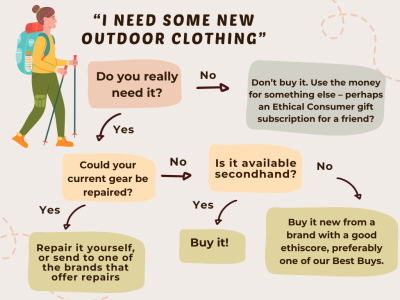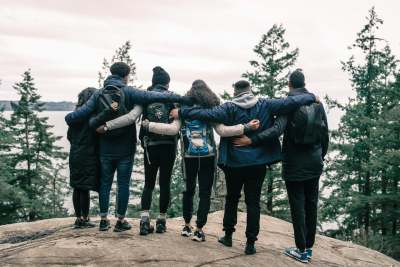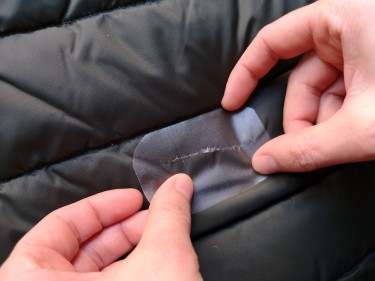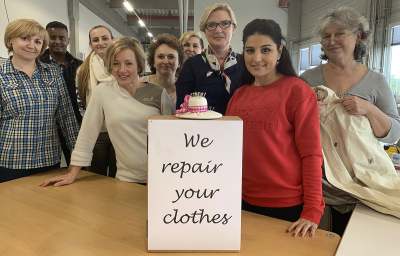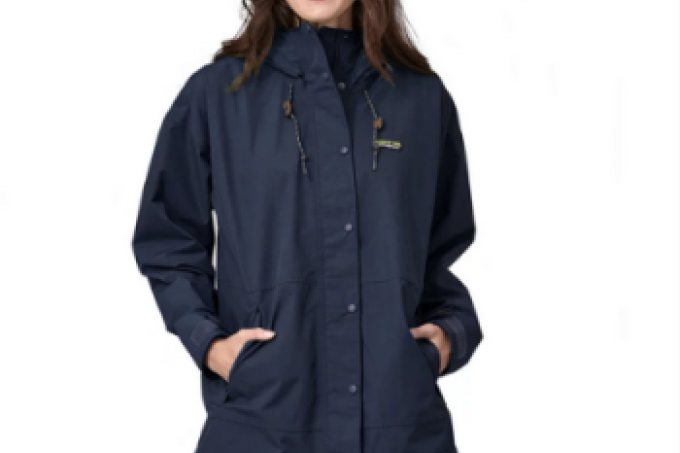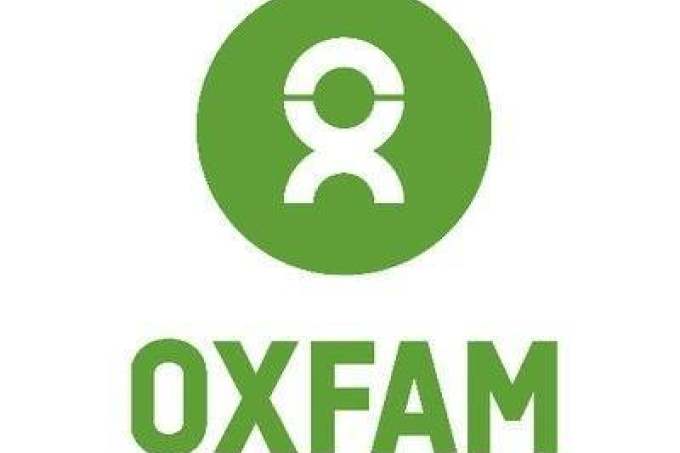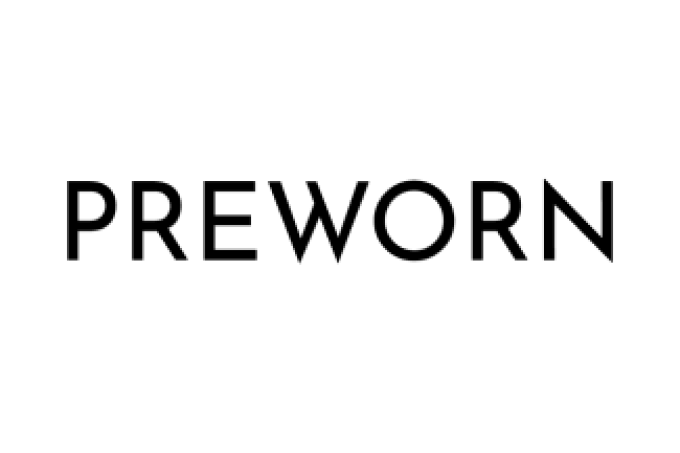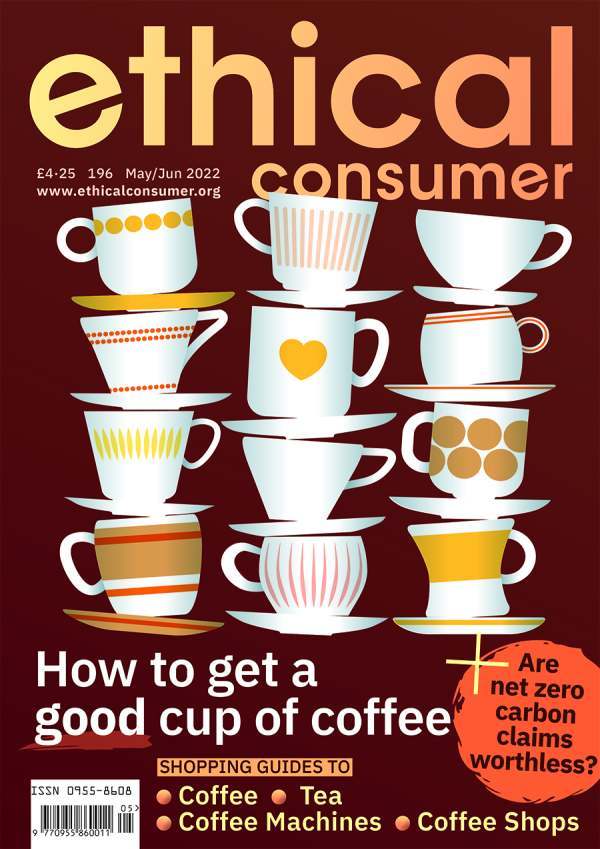Buying secondhand, repairing and recycling outdoor clothing and equipment
The most ethical and sustainable gear is that which you already own, so it is best to make it last as long as possible.
If it does need repairing and your skills aren’t up to the job, then a number of the brands in our guide offer repairs (or will recycle your gear if it is beyond repair).
Several brands will also accept your old clothes once you are done with them and recycle them, ensuring they don’t go to landfill.
If what you have can’t be fixed, then buying secondhand is a great option because it doesn’t increase demand for new goods – all of which have some impact on people and planet. Plus, it is usually cheaper!
Some of the brands in this guide also sell secondhand products, including most of our Best Buy brands.
Repair and secondhand services offered by a selection of ethical outdoor clothing and equipment brands
| Brand |
Repair service? |
Recycles old gear? |
Secondhand shop? |
| Alpkit |
Yes – any brand. |
Yes: Continuum Project, any brand. |
Yes: Alpkit Outlet official eBay shop. |
| Craghoppers |
Limited repairs, in partnership with Timpson. |
No |
No |
| Dare 2b |
No |
No |
No |
| Finisterre |
Yes |
Yes: discount given on new gear in exchange. |
Yes: Reskinned shop. |
| Fjällräven |
No – but offers detailed instruction on its website of how to repair clothes. |
No |
No |
| Mammut |
Yes |
No |
No |
| Montane |
Yes |
No |
Yes – Montane Factory Shop which sells end of line and repaired items (Northumberland and online). |
| Páramo |
Yes |
Yes: discount given on new gear in exchange. |
Yes: Páramo Re-store Adventure eBay shop. |
| Patagonia |
Yes |
Yes |
Yes: Worn Wear – though only delivers within the US. In-person shop in Berlin. |
| Rab/Lowe Alpine |
Yes |
Yes: including any old down items, such as pillows. |
Kind of: ‘Mountain Outfitters’ shop sells end of line, factory seconds, and samples (Derbyshire store only). |
| Regatta |
No |
No |
No |
| Vaude |
Yes – take to your nearest Vaude dealer. Repairs other brands too. |
No |
Maybe – Vaude Second Use Shop launched several years ago with eBay, though could not be found. |
NB Table only includes brands with an overall ethiscore of 40 and above (out of 100).
There are also a few independent repair services in the UK that specialise in outdoor gear, including Lancashire Sports Repairs and Scottish Mountain Gear.
Secondhand marketplaces
There are several secondhand marketplaces that you could use, besides the well-known ones like eBay, charity shops, and Gumtree.
We have rated some of these secondhand clothing marketplaces in our ethical clothing brands guide, including Depop, Preloved, Thrifted and Vinted.
Increasing the lifespan of your outdoor clothing and equipment
According to waste charity WRAP, an extra nine months of active use can reduce a garment’s carbon, water and waste footprints by as much as 30%. While we usually replace our day-to-day clothes because they no longer fit or we don’t like them, a recent study found that for outdoor clothing, we’re most likely to chuck out items due to damage or poor functionality. Care is thus important.
The REI’s ‘Care and Repair’ website has some of the most comprehensive articles on the web on gear care. The iFixit website is also a good source.
Here are our top tips for increasing the life span of clothes:
- Buy gear built to last. Cheap tents from bargain retailers which are then abandoned after festivals says a lot about throw away culture in this industry.
- Wash it as per the manufacturer's instructions – it will perform better and last longer.
- Re-waterproof jackets, coats and tents: all waterproofing fades over time. This is especially true in the case of PFC-free gear. We recommend using Nikwax’s products to re-proof your kit. Nikwax is the sister company of Páramo, and their cleaning and waterproofing products do not contain any toxic PFCs, parabens, phthalates or triclosan.
- Dry your gear after use and store in a cool place (no one likes a mouldy tent!)
- If you own leather boots they need to be regularly treated to stop the material from cracking and eventually splitting. Nikwax offers a range of products, but you can also use beeswax (unless you're vegan).
- Don’t compress your down/insulated gear for long periods of time – it will reduce its insulating properties.
Several companies in this guide offer professional outdoor gear cleaning and care services including Alpkit, Rab/Lowe Alpine (only for own-branded products) and Páramo.

